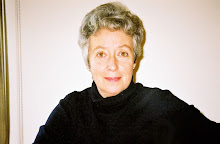Pakistani authorities announced Nov. 10 that they were
banning Malala Yousafzai’s book, I Am Malala, from private schools and
libraries throughout Pakistan. Calling
her “a tool of the West,” insufficiently respectful toward Islam, and too
sympathetic to religious minorities, the authorities have banned the book from
more than 40,000 schools. In so doing,
they’ve enlarged the target on Malala’s back.
 |
| Malala visits President and Mrs. Obama and their daughter, Malia, in October. |
They probably have also set in motion a response that will
increase sales of the book and heighten the determination of those who believe
this brave young teenager’s message deserves to be heard.
Remember Reading Lolita in Tehran? It’s a great example of why removing books
from classrooms usually has the opposite effect of what the banners intend. But
then — the Taliban and its cronies in Pakistan probably haven’t read that one.
I Am Malala is on the New York Times bestseller list and is
likely to stay there for a good while.
The young author joins a long and illustrious list of writers whose
books were banned, burned, or pulped.
James Joyce (Ulysses), The Arabian Nights,
Henry Miller’s Tropic of Cancer, Joseph Conrad’s Heart of Darkness (required
reading when I was in high school), Darwin’s Origin of Species, Harper Lee’s To
Kill A Mockingbird, Harriet Beecher Stowe’s Uncle Tom’s Cabin, and of course,
Vladimir Nabokov’s Lolita. Among the
most ludicrous was the ban on Anna Sewell’s youth novel about a girl and her
beloved horse, Black Beauty, banned in apartheid South Africa because the word
“black” was in the title. (A wonderful
source for banned book titles is
http://www.postdesk.com/banned-books-list-reasons-why-censorship.)
The fact that the interest in, and loyalty to, banned books
is heightened by the attacks on them
continues to be lost on communities, and community groups, that believe
suppression of information solves a problem for them. It never does. Nevertheless, efforts continue around the
world, led not just by political leaders but also by groups of all sizes. Their persistence gave birth to Banned Books
Week.
Banned Books Week is the national U.S. book community's
annual celebration of the freedom to read. Hundreds of libraries and bookstores
around the country draw attention to the problem of censorship by mounting
displays of challenged books and hosting a variety of events. Banned Books Week
2014 will be held September 21-27.
Banned Books Week was launched in 1982 in response to a
sudden surge in the number of challenges to books in schools, bookstores and
libraries. More than 11,300 books have been challenged since 1982. According to
the American Library Association, there were 464 challenges reported to the
Office of Intellectual Freedom in 2012, and many more go unreported. For a list of the most challenged books of
2012, go here: http://bannedbooksweek.org/about
It is sad that the children in so many of Pakistan’s schools
will not be able to read Malala’s book. But I imagine they will know about her
story regardless of the ban. As of this writing, I Am Malala is No. 5 on the New York Times
list. Millions of people know that. And
there’s not a thing the Taliban can do about it.
— Sheila Gibbons,
Editor
This commentary is reprinted from the Fall 2013 issue of MEDIA REPORT TO WOMEN. For details about that issue and how to subscribe to this quarterly news journal, visit www.mediareporttowomen.com

No comments:
Post a Comment